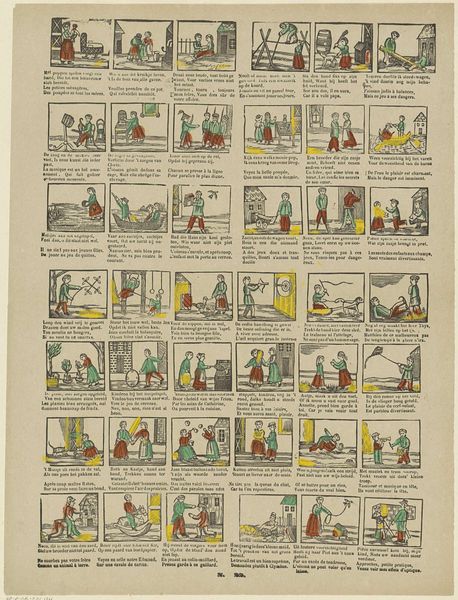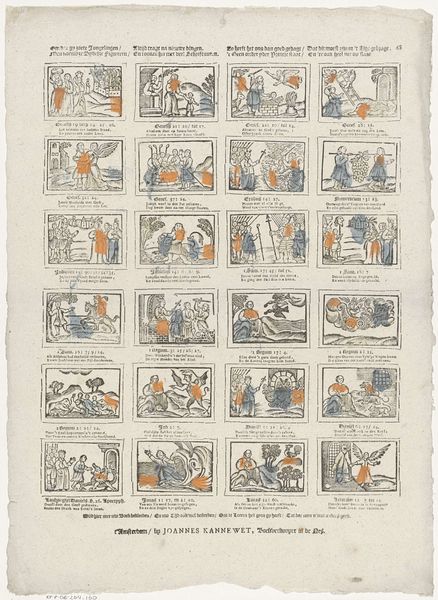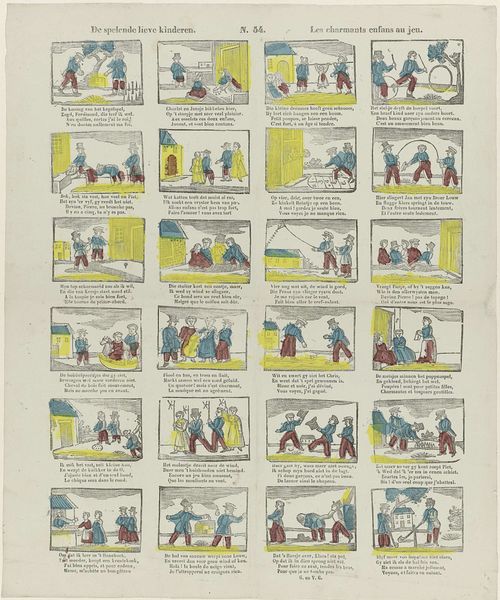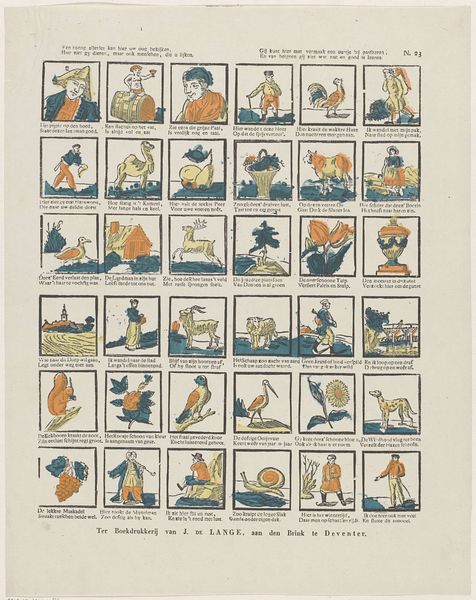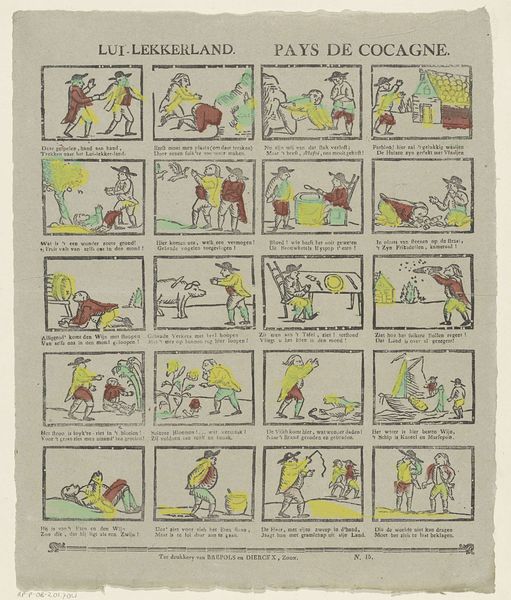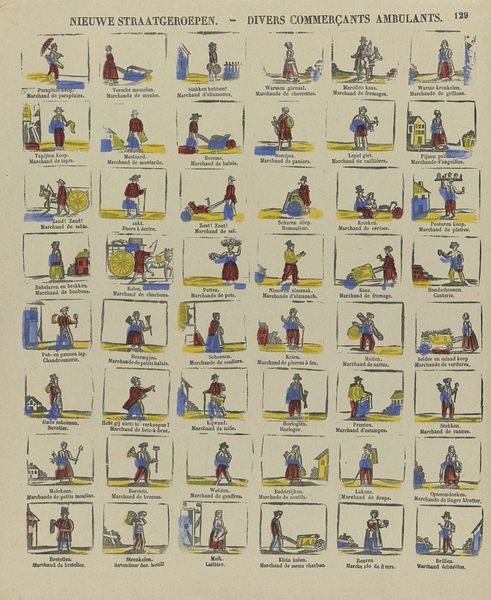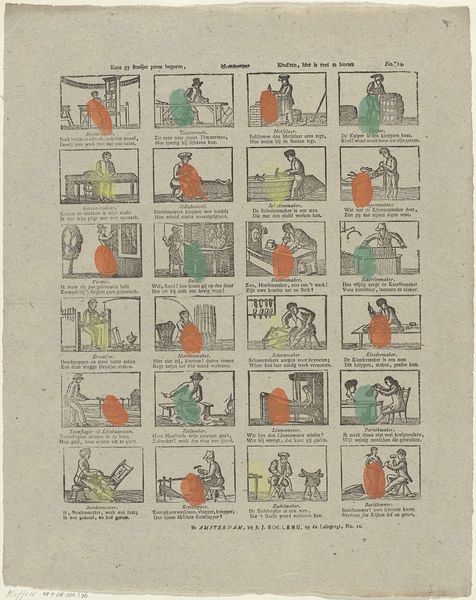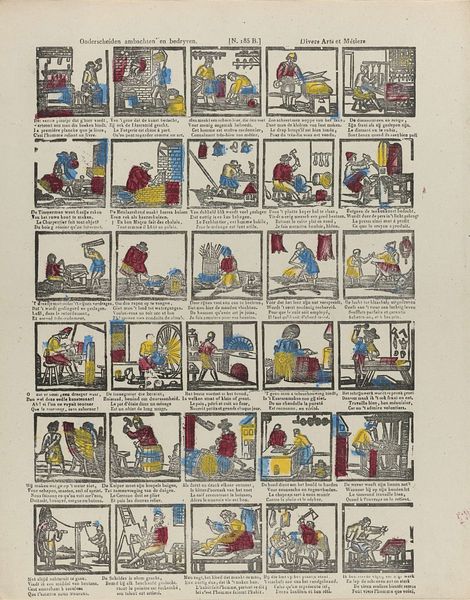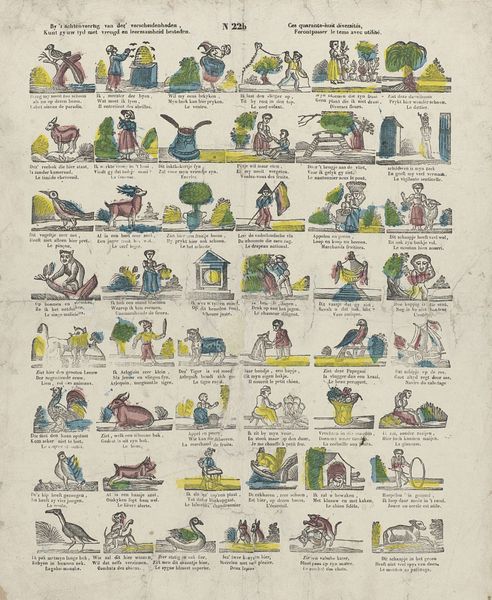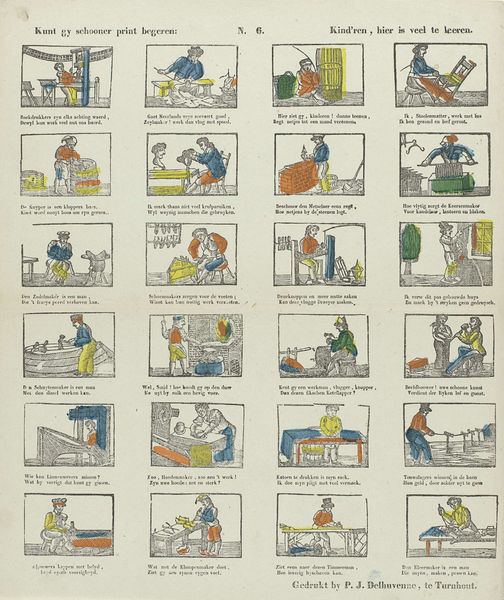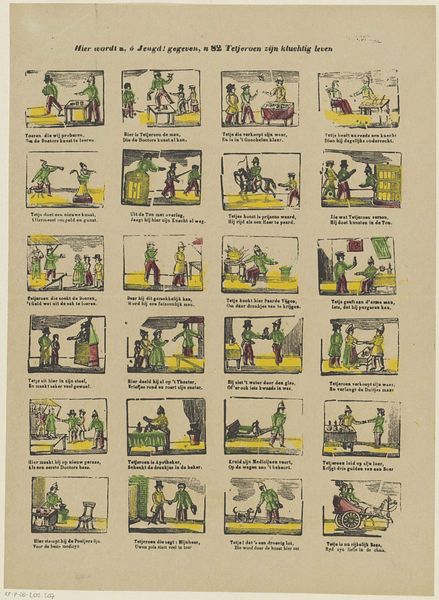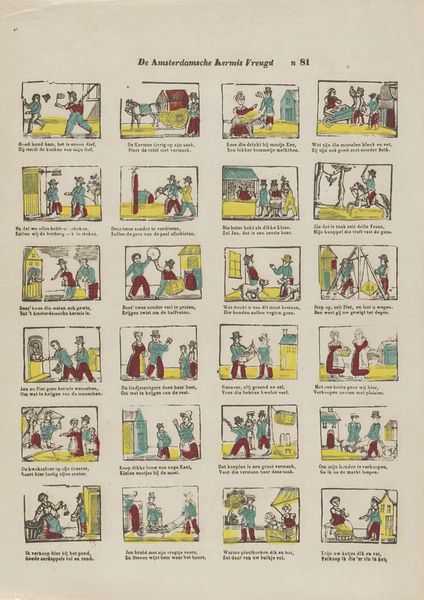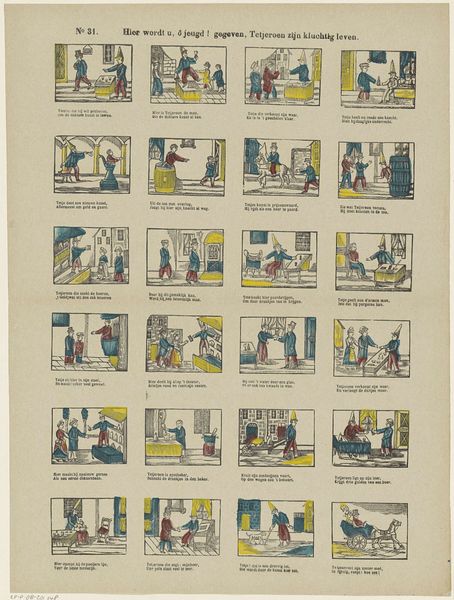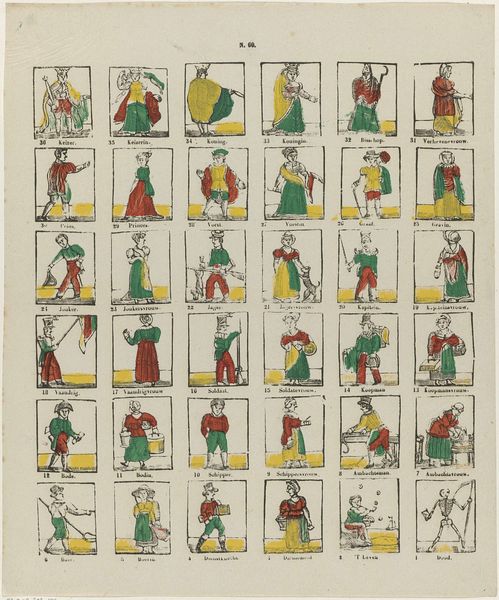
graphic-art, print
#
graphic-art
#
comic strip sketch
# print
#
folk-art
#
comic
#
genre-painting
Dimensions: height 399 mm, width 330 mm
Copyright: Rijks Museum: Open Domain
Curator: We’re looking at “Kinder oefeningen,” which loosely translates to “Children’s Exercises,” a print dating between 1833 and 1911 from the firm of Brepols & Dierckx zoon. It resides here at the Rijksmuseum. Editor: It feels like a vintage comic strip. Each square captures a tiny moment – kids playing with tops, pulling carts, flying kites. There’s a simplicity to the figures that is almost folk-art-like. Curator: Exactly! These images served a clear didactic purpose, embedding societal values and expectations. Each frame demonstrates simple actions, potentially acting as an early form of visual education, mirroring common scenes for children, while quietly training them to accept traditional roles. Editor: I am really taken with the role and placement of the women. Note how several squares portray domestic scenes. Women attending to smaller children, emphasizing nurturing, contrasting sharply with the boys who have access to games of skill like kite flying and toy boats. Curator: Well spotted. The image production from this era, certainly contributed to the formation of societal norms; prints like this helped establish a framework for acceptable behavior, almost an early form of propaganda. They subtly influenced public sentiment, cementing established views within the younger generation. Editor: Propaganda feels harsh. How can children in a swing contribute to a power dynamic? But I do find the emphasis on children playing, and engaging in seemingly wholesome pastimes to feel naive when viewed from our present, even disturbing, especially since some kids never had these possibilities for entertainment, like those trapped in labor industries. Curator: These images offer insight into the idealized life; as representations, these children are also missing from view: those who were working in mills or on farms or sold on the streets... Editor: Looking at this series of prints gives a lot of food for thought. There's simplicity that is both inviting, but unsettling. It really highlights the social fabric of that time through these tiny slices of life. Curator: Absolutely. These "exercises" reveal much about childhood, pedagogical beliefs and underlying socio-economic assumptions present when it was produced.
Comments
No comments
Be the first to comment and join the conversation on the ultimate creative platform.
